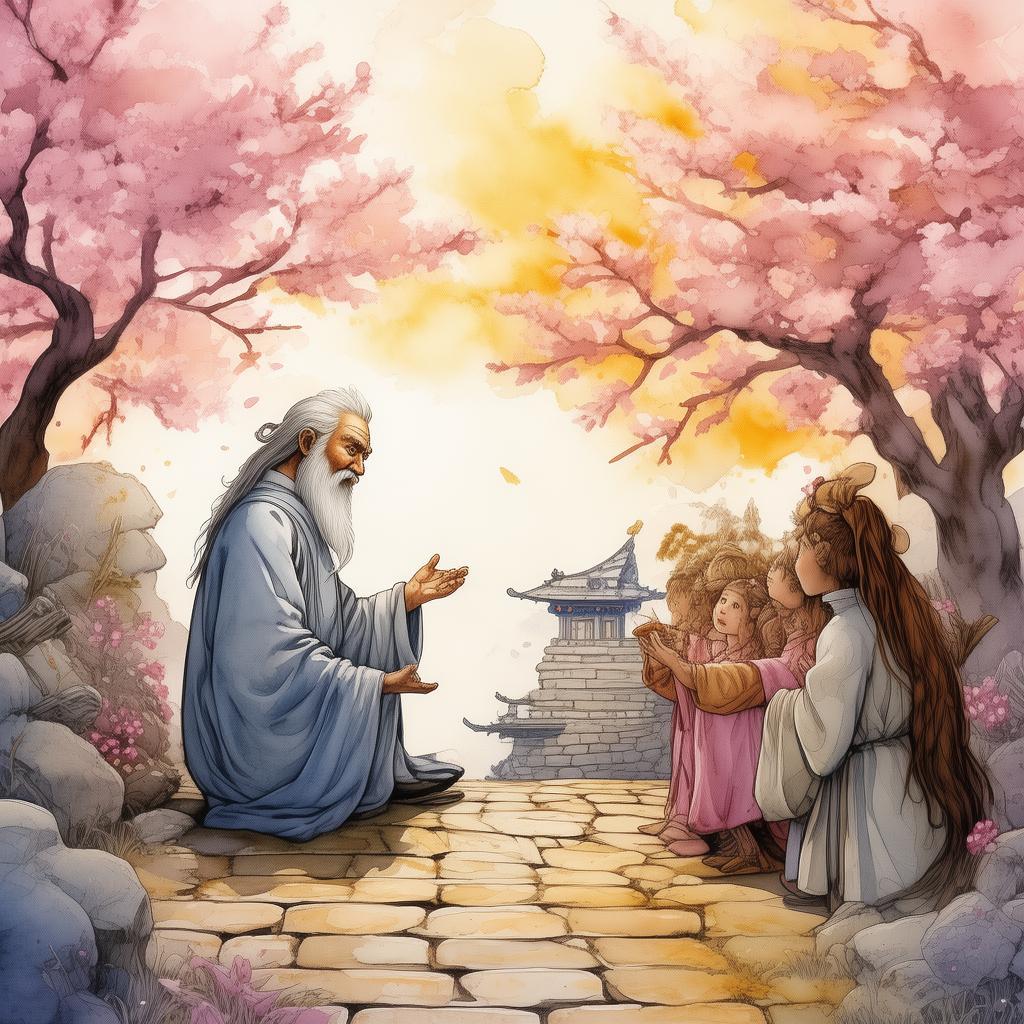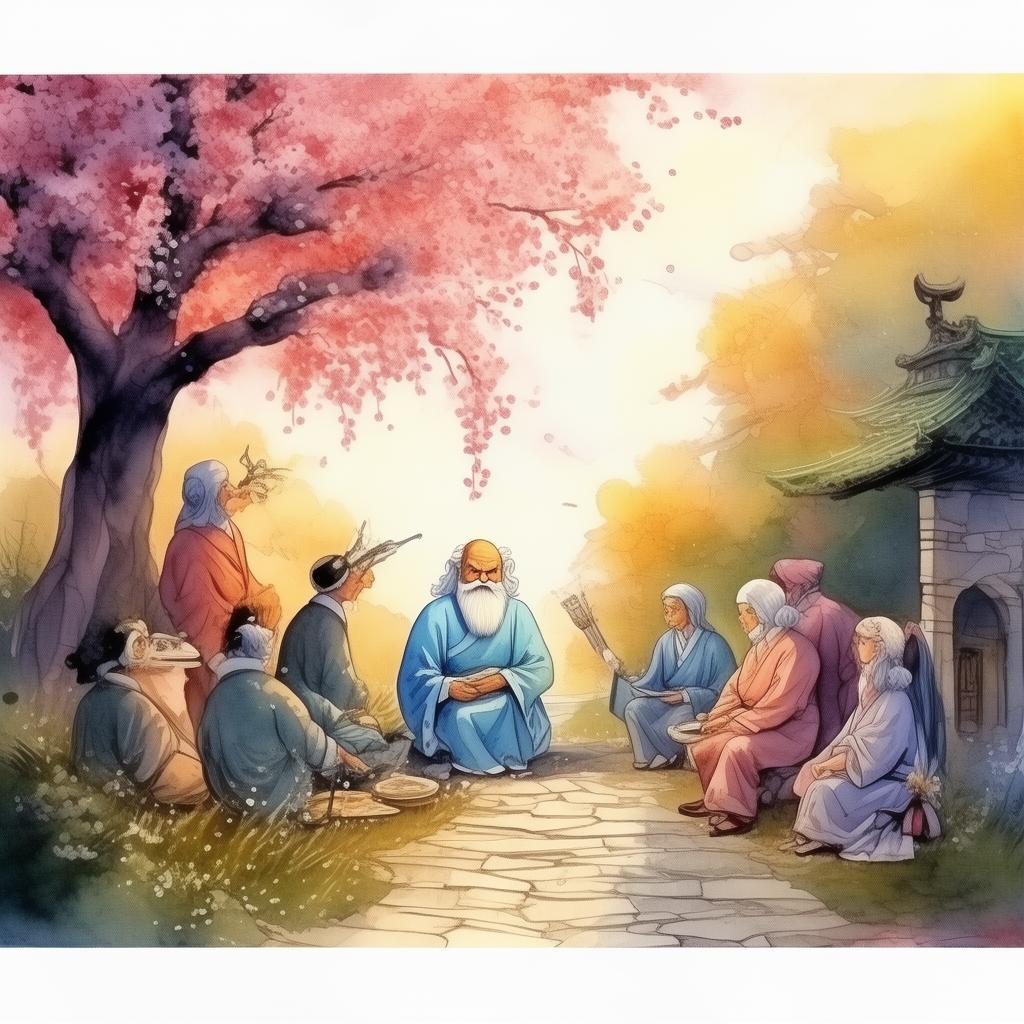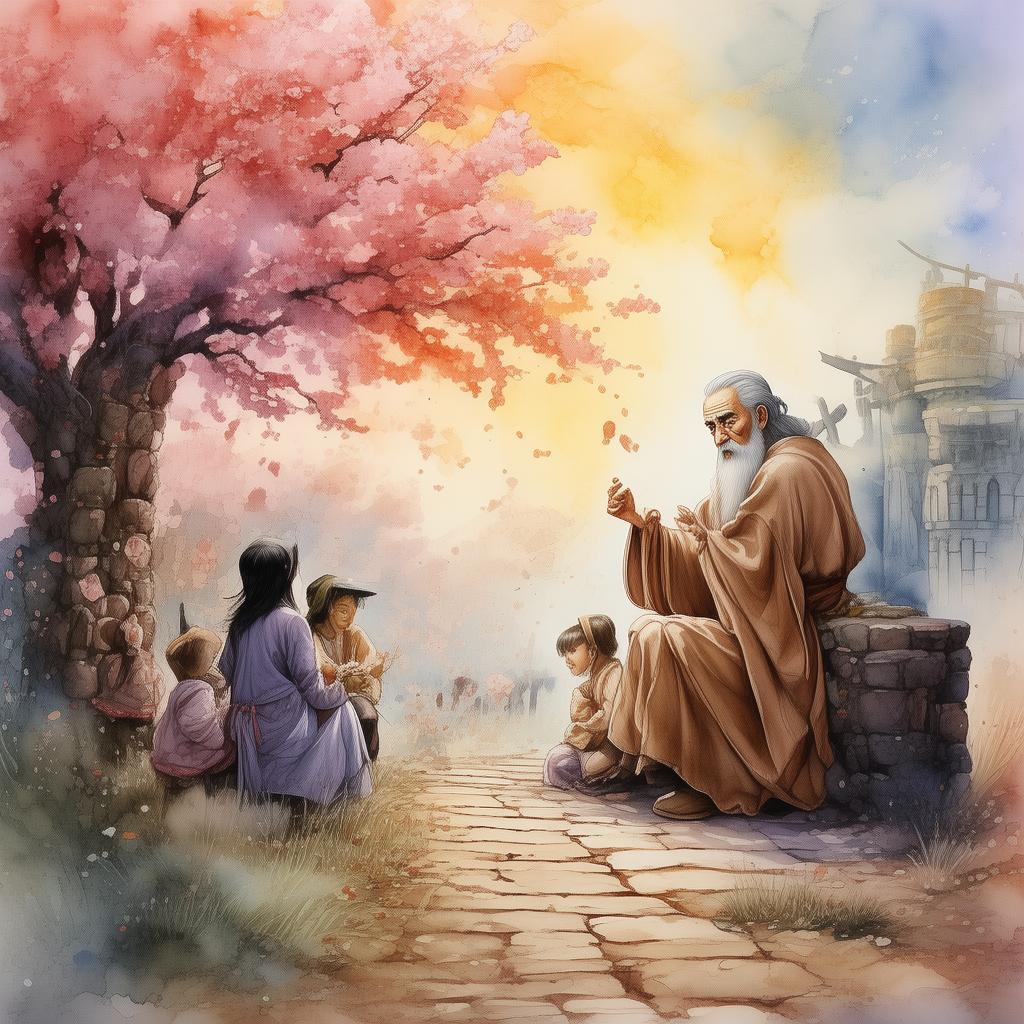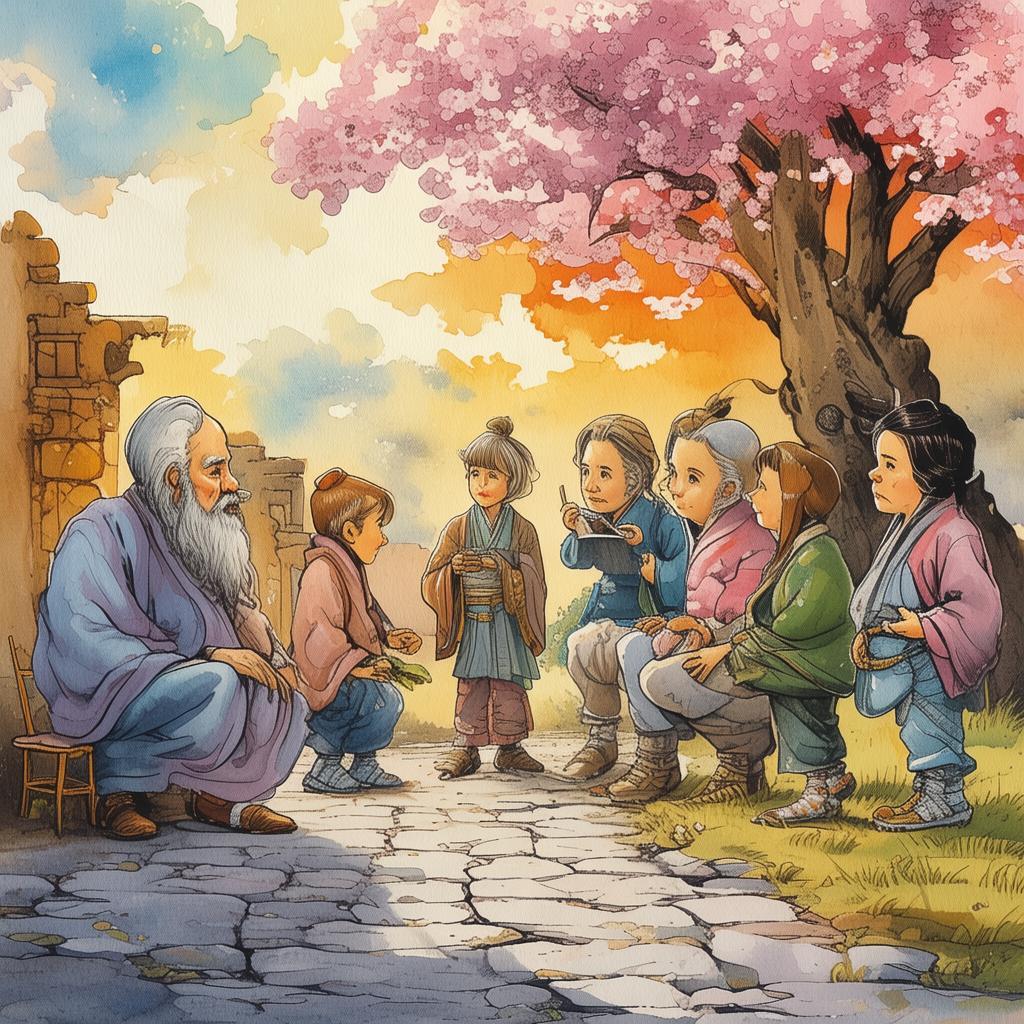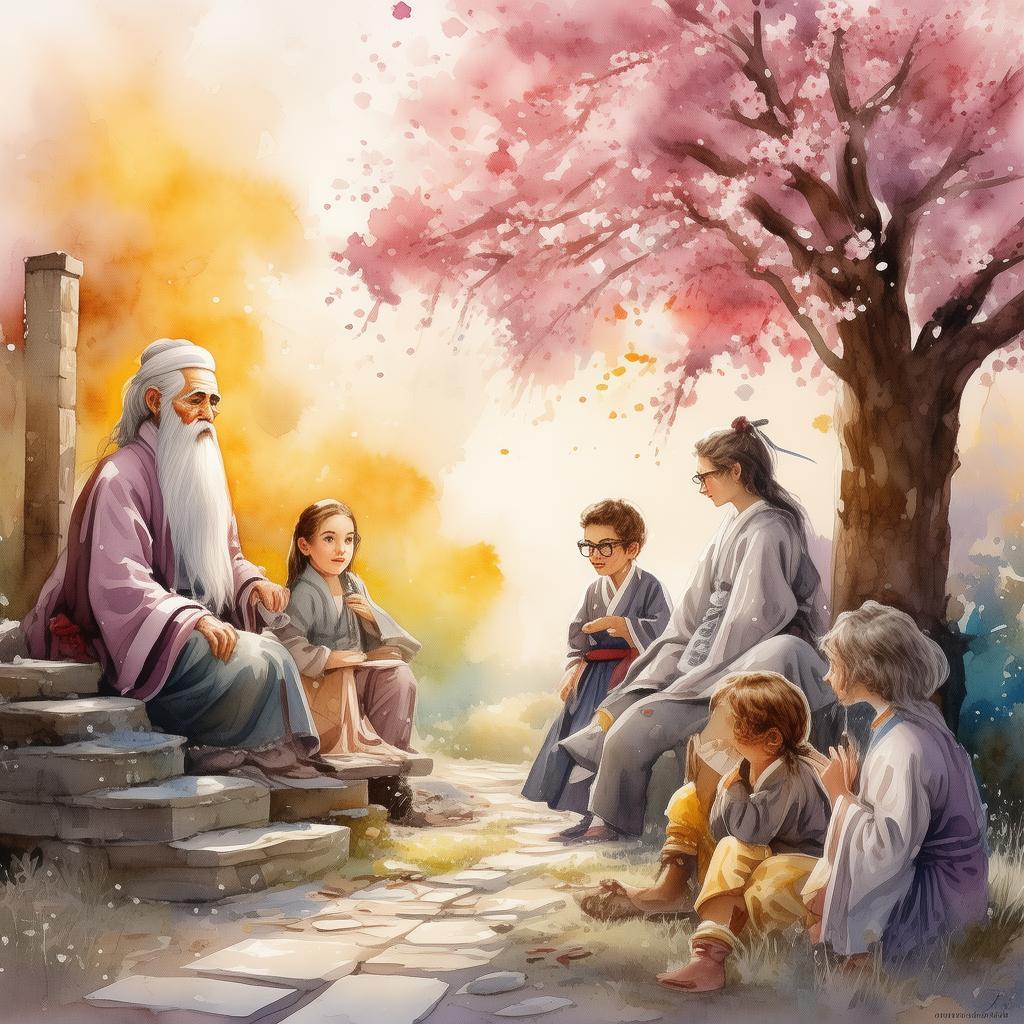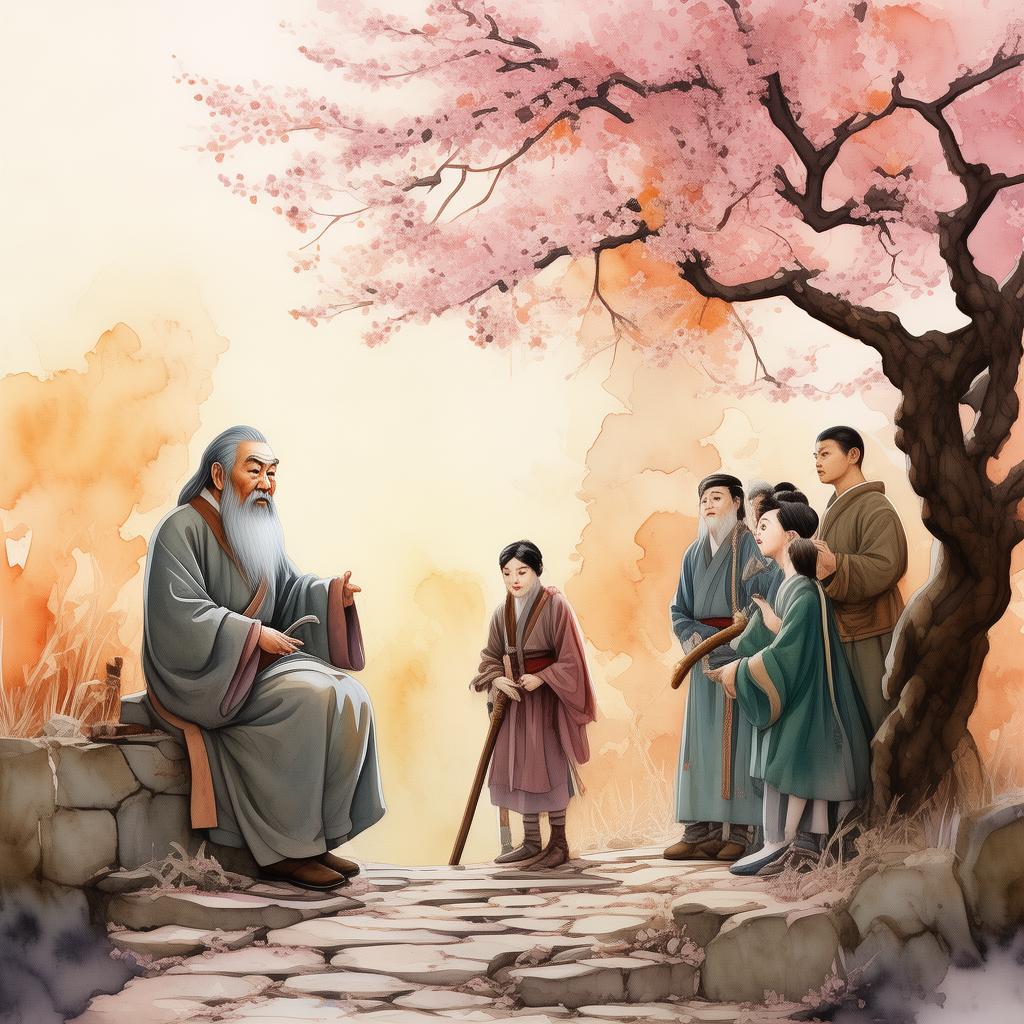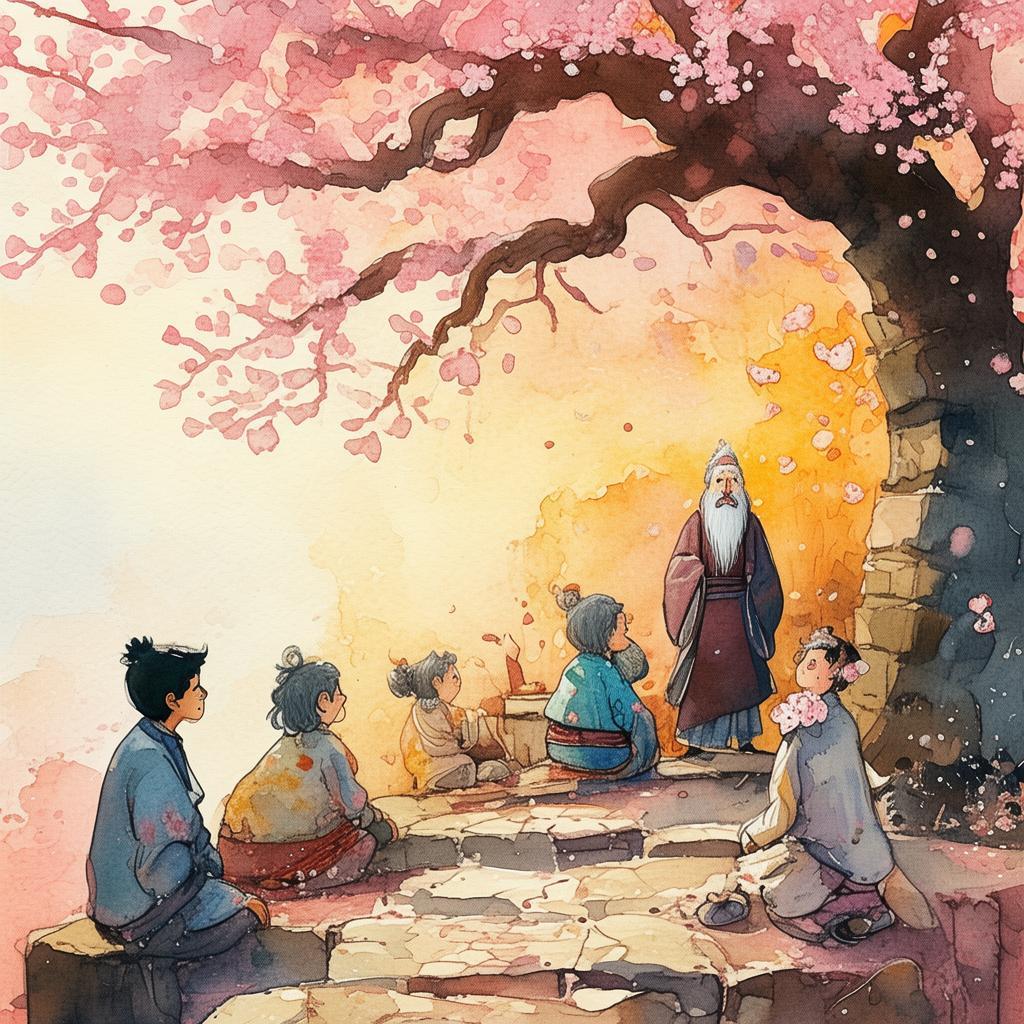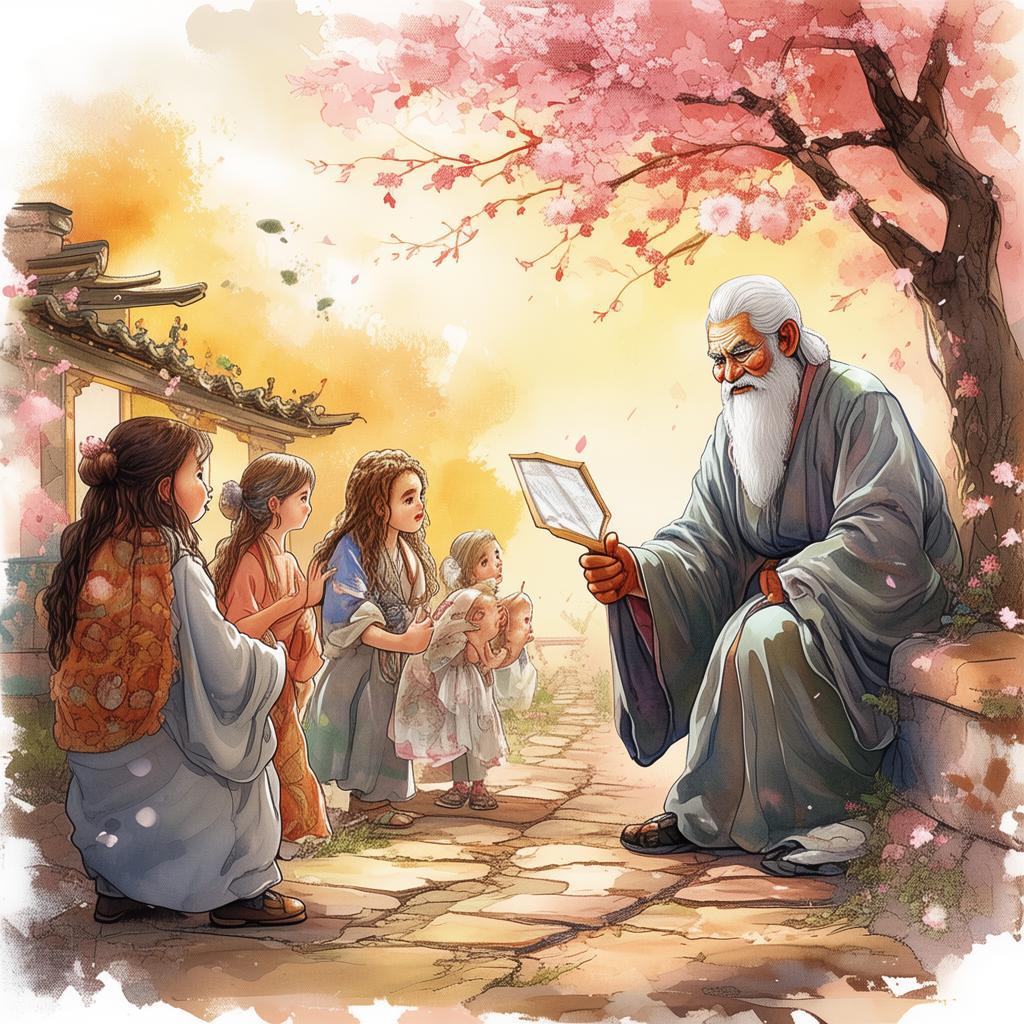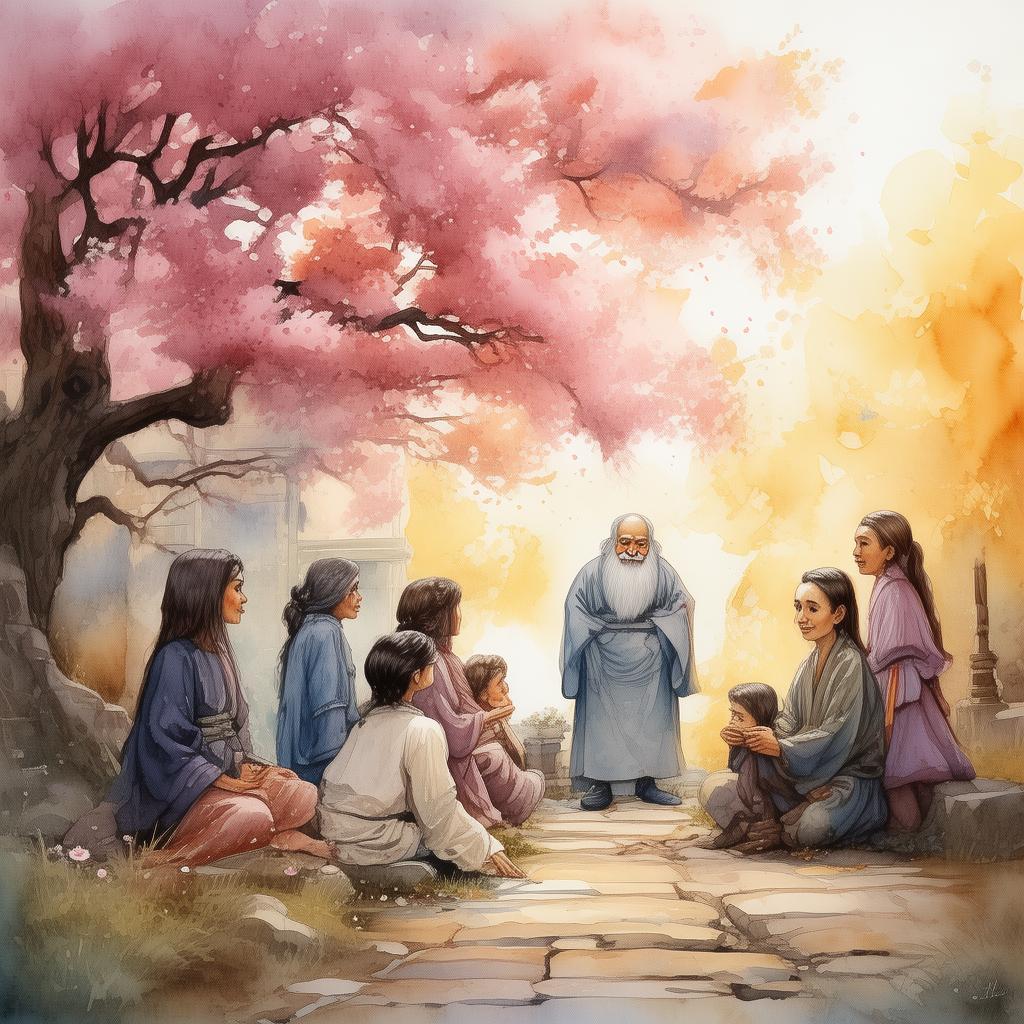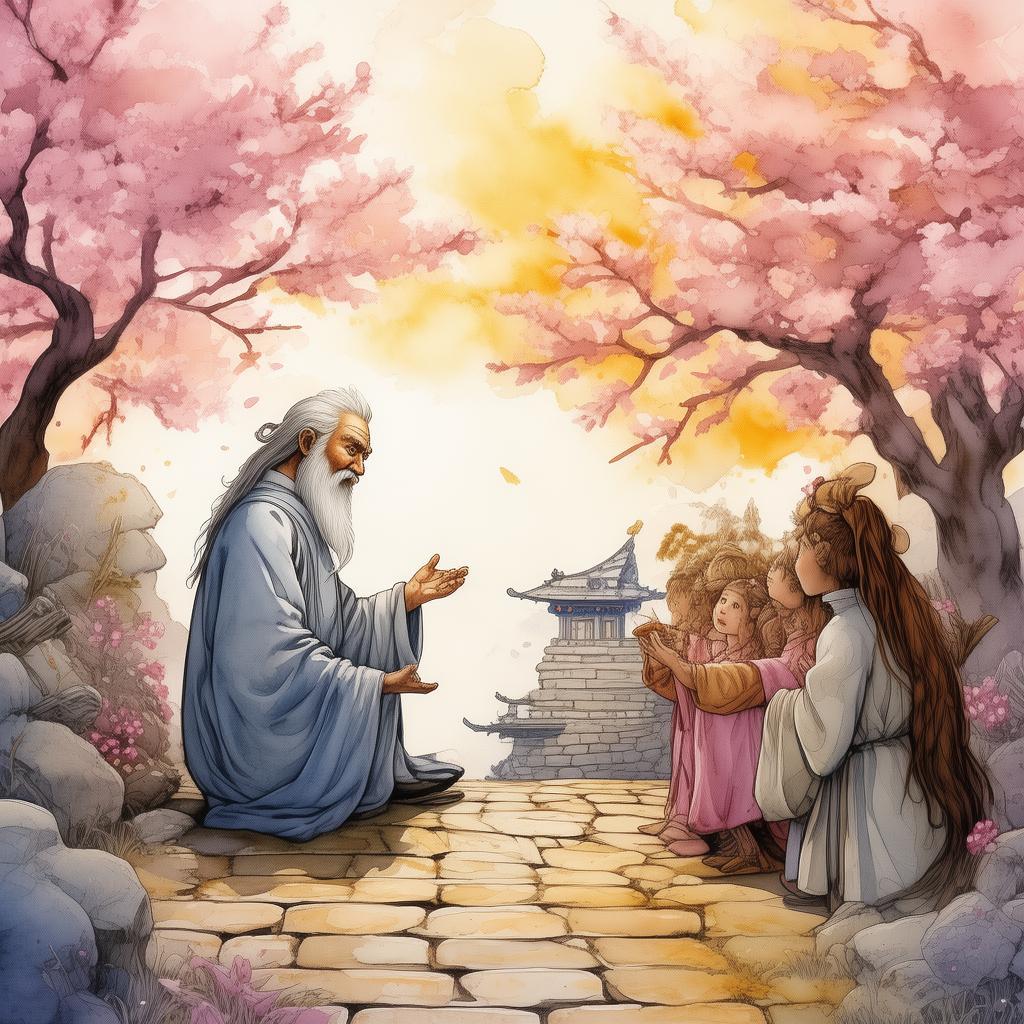The Resplendent Rebirth: A Tale of the Golden Age
In the heart of the Ming Dynasty, amidst the vibrant tapestry of artistic expression and scholarly pursuit, there lived a young man named Lin. His name became synonymous with the rebirth of the golden age, a period of cultural and artistic rejuvenation that had long been dormant.
Lin was not born into a family of scholars or artists; rather, he was a self-taught prodigy whose passion for art and literature knew no bounds. He spent his days sketching intricate designs on scrolls and his nights engrossed in ancient texts, seeking inspiration in the past to bring forth a new era of creativity.
One day, as he wandered through the bustling streets of Nanjing, Lin stumbled upon an old, dusty scroll tucked away in a forgotten corner of a quaint bookstore. The scroll, covered in cobwebs and dust, seemed to whisper secrets of a bygone era. Intrigued, he purchased it and took it back to his modest workshop, where he spent days unraveling its mysteries.
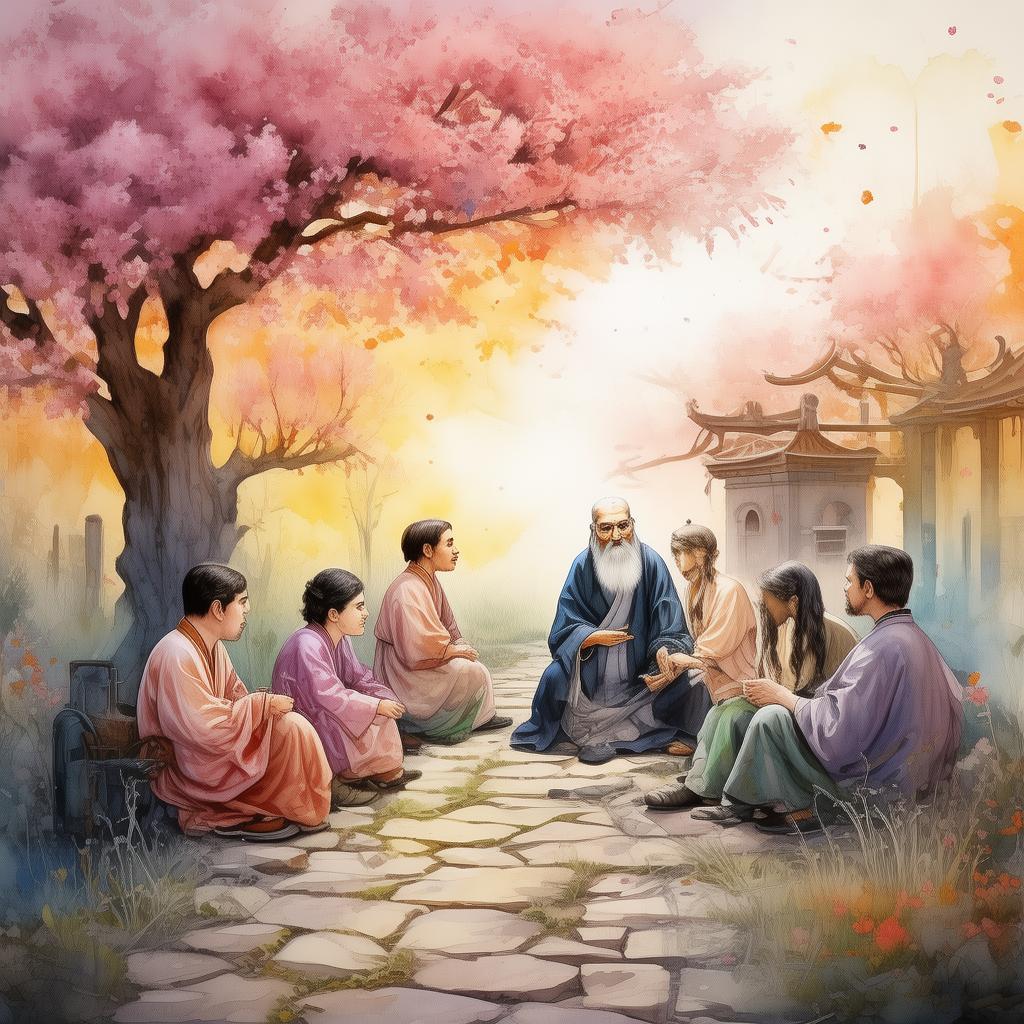
As Lin delved deeper into the scroll's contents, he discovered the story of a forgotten artistic movement, a time when scholars, artists, and thinkers had come together to revitalize the cultural landscape of China. The scroll spoke of a golden age, a time of unparalleled creativity and intellectual fervor. It was a time when the arts were not just a form of entertainment but a way of life, a means to explore the human condition and reflect on the world.
Inspired by the scroll's tales, Lin set out to create his own masterpiece, a painting that would encapsulate the essence of this lost golden age. He worked tirelessly, his brush strokes becoming more fluid and expressive with each passing day. The painting, he decided, would be a triptych, with each panel representing a different aspect of the golden age: art, literature, and philosophy.
As the months passed, Lin's painting began to take shape. The first panel depicted a scene from the artistic renaissance, with artists painting, sculpting, and composing music. The second panel showed scholars engaged in heated debates and the creation of new literary works. The third panel, the most intricate and complex, portrayed philosophers contemplating the nature of existence and the cosmos.
Word of Lin's painting spread like wildfire, captivating the attention of the emperor himself. The emperor, a patron of the arts, was so taken by Lin's work that he invited the young artist to the palace. There, amidst the opulence and splendor of the imperial court, Lin presented his triptych to the emperor and the courtiers.
The painting was a triumph, a testament to the power of creativity and the human spirit. It sparked a cultural renaissance, inspiring artists, writers, and thinkers across the land to rediscover their own passion for the arts. The emperor, moved by Lin's vision, decreed that a new golden age had dawned, and he appointed Lin as the royal artist, tasked with leading the cultural movement.
However, Lin's journey was not without its challenges. He faced skepticism from the old guard, who believed that the past should remain untouchable. He also encountered personal struggles, as his newfound fame and power began to change him. Yet, Lin remained steadfast in his mission, determined to preserve the essence of the golden age for future generations.
In the end, Lin's painting became an enduring symbol of the cultural renaissance. It was a reminder that the past could be a source of inspiration and a catalyst for change. And so, through his art, Lin brought about a resplendent rebirth, a time of euphoria and renewal that would forever be etched in the annals of Chinese history.
The Resplendent Rebirth: A Tale of the Golden Age was not just a story of an artist's triumph; it was a story of the human spirit, resilience, and the power of creativity to overcome adversity. It was a tale that would resonate with readers for generations, inspiring them to seek out their own golden ages, to create and to dream.
✨ Original Statement ✨
All articles published on this website (including but not limited to text, images, videos, and other content) are original or authorized for reposting and are protected by relevant laws. Without the explicit written permission of this website, no individual or organization may copy, modify, repost, or use the content for commercial purposes.
If you need to quote or cooperate, please contact this site for authorization. We reserve the right to pursue legal responsibility for any unauthorized use.
Hereby declared.
